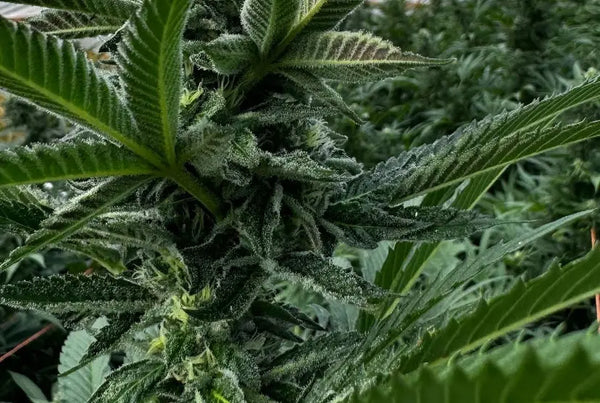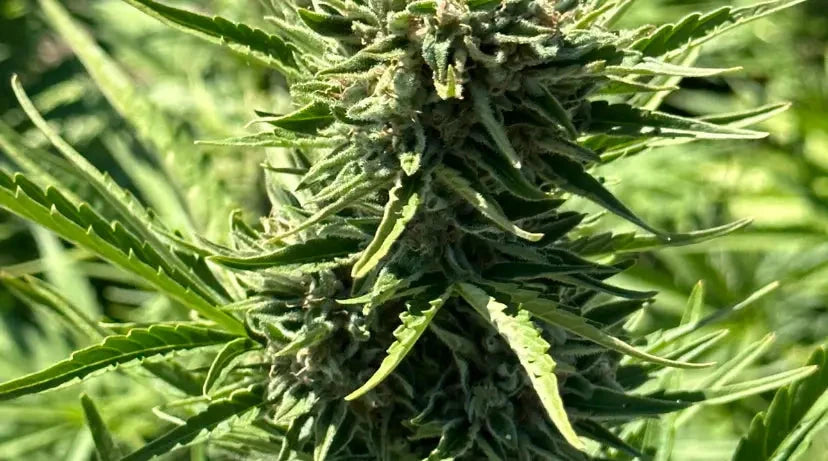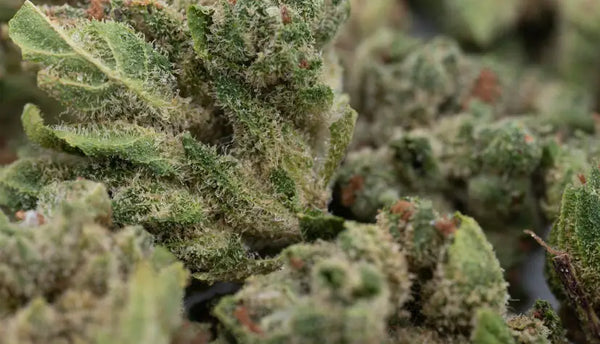No Products in the Cart
INDOOR THCA FLOWER 5g - $39.99 | GREENHOUSE THCA FLOWER 7g - $34.99

Over 50 million Americans suffer from chronic pain, with many turning away from traditional pharmaceuticals in search of natural alternatives. As cannabis research expands, two cannabinoids have emerged as leading contenders for natural pain management: THCA (tetrahydrocannabinolic acid) and CBD (cannabidiol). While both offer promising therapeutic benefits, understanding their unique properties and mechanisms can help you make an informed decision about which might be more effective for your specific pain relief needs.
The debate between THCA flower vs CBD isn't simply about choosing one over the other – it's about understanding how each cannabinoid works, their distinct advantages, and how they might complement each other in a comprehensive pain management strategy. This comprehensive guide will explore the science behind both compounds, their pain-relieving mechanisms, and help you determine which option might be best suited for your individual needs.
Tetrahydrocannabinolic acid (THCA) is the acidic precursor to THC found in raw, unheated cannabis plants. Unlike its psychoactive counterpart, THCA doesn't produce intoxicating effects when consumed in its natural state. This raw THCA flower contains the cannabinoid in its original form, offering unique therapeutic benefits without the "high" associated with traditional cannabis use.
When cannabis is heated through smoking, vaping, or cooking (a process called decarboxylation), THCA converts to THC. However, consuming THCA in its raw form preserves its distinct molecular structure and therapeutic properties. This distinction is crucial for understanding why many users prefer raw cannabis consumption for certain medical applications.
The key difference between THCA and THC lies in their chemical structure and effects. THCA contains an additional carboxyl group that prevents it from binding effectively to CB1 receptors in the brain – the receptors responsible for psychoactive effects. This structural difference allows THCA to provide therapeutic benefits without intoxication, making it an attractive option for users who need relief during work hours or daily activities.
Research suggests that THCA may offer several advantages over its decarboxylated form:
THCA hemp flower exists in a unique legal gray area. Under federal law, hemp-derived products containing less than 0.3% delta-9 THC are legal, and since THCA technically isn't THC until heated, many THCA products fall within this legal framework. However, legal interpretations vary by state, making it essential to understand local regulations before purchasing or using THCA products.
The benefits of consuming raw cannabis extend beyond just THCA content. Raw cannabis contains various other compounds in their acidic forms, including CBDA, CBGA, and numerous terpenes that may contribute to enhanced therapeutic effects through the entourage effect.

Cannabidiol (CBD) has gained widespread recognition as a therapeutic compound following extensive research and FDA approval of Epidiolex, a CBD-based medication for certain forms of epilepsy. Unlike THCA, CBD has been thoroughly studied, with numerous clinical trials demonstrating its efficacy for various conditions including pain, anxiety, and inflammation.
CBD works differently from THCA by interacting with multiple receptor systems in the body, including:
The CBD market offers numerous product formats, each with distinct advantages:
CBD Oil and Tinctures: Provide precise dosing and fast sublingual absorption, making them ideal for consistent daily use and easy dose adjustments.
CBD Capsules: Offer convenient, pre-measured doses with longer-lasting effects, perfect for users who prefer standardized dosing without taste considerations.
CBD Topicals: Target localized pain and inflammation directly at the source, providing relief without systemic effects.
CBD Edibles: Provide long-lasting effects through digestive absorption, though with delayed onset times.

THCA pain relief mechanisms primarily center around its potent anti-inflammatory properties. Preliminary research suggests that THCA may inhibit cyclooxygenase (COX) enzymes, similar to traditional NSAIDs but potentially with fewer gastrointestinal side effects. This anti-inflammatory action may be particularly beneficial for conditions characterized by chronic inflammation, such as:
THCA also appears to interact with the endocannabinoid system differently than THC, potentially offering unique neuroprotective benefits. Some studies suggest that THCA may help protect neurons from oxidative stress and inflammation, which could be valuable for managing neuropathic pain conditions.
CBD's approach to pain relief involves multiple mechanisms, making it effective for various types of pain. Research has identified several key pathways through which CBD provides analgesic effects:
Endocannabinoid System Modulation: CBD enhances the body's natural endocannabinoid production by inhibiting enzymes that break down anandamide and 2-AG, leading to improved natural pain regulation.
Serotonin Pathway Activation: By activating 5-HT1A receptors, CBD may reduce pain perception and provide additional anti-anxiety benefits that often accompany chronic pain conditions.
Ion Channel Interactions: CBD affects various ion channels involved in pain signaling, potentially reducing nerve excitability and inflammatory responses.
Both THCA and CBD may be more effective when consumed alongside other cannabinoids and terpenes – a phenomenon known as the entourage effect. Raw THCA flower naturally contains various compounds that may enhance its therapeutic effects, while full-spectrum CBD products maintain the complete cannabinoid profile of the hemp plant.
This synergistic interaction suggests that whole-plant extracts may provide superior pain relief compared to isolated compounds. Users often report enhanced effects when using products that preserve the natural balance of cannabinoids, terpenes, and flavonoids found in the original plant.

Understanding the timing characteristics of each compound is crucial for effective pain management:
THCA Flower Effects:
CBD Effects:
THCA Side Effects:
CBD Side Effects:
THCA Products:
CBD Products:

Healthcare providers increasingly recognize both cannabinoids as viable options for pain management, though CBD has more extensive clinical documentation. Many physicians report that patients using CBD show improved quality of life markers, reduced opioid dependence, and better sleep quality.
For THCA, anecdotal reports from patients suggest particular effectiveness for:
Many users find that combining both cannabinoids provides synergistic benefits. A typical approach might involve:
This approach allows users to maximize the unique benefits of each cannabinoid while minimizing potential drawbacks.
Choose THCA if you:
Choose CBD if you:
Before starting any cannabinoid regimen, consulting with a healthcare provider familiar with cannabis medicine is essential. They can help:
THCA flower derived from hemp containing less than 0.3% delta-9 THC exists in a legal gray area federally, but state laws vary significantly. Always check local regulations before purchasing.
Many users successfully combine both cannabinoids, often finding enhanced therapeutic effects. Start with low doses of each and monitor your response.
Raw THCA typically takes 30-60 minutes, while CBD effects depend on consumption method (15 minutes for sublingual, up to 90 minutes for edibles).
Both show promise, but the "better" option depends on your specific condition, lifestyle, and response to each compound. Many users find combination therapy most effective.
For hemp-derived CBD products, no card is needed. THCA flower requirements vary by state and product source.
Never discontinue prescription medications without medical supervision. Cannabinoids may help reduce dependence on other medications, but this should be done gradually under professional guidance.
The choice between THCA flower vs CBD for pain relief ultimately depends on individual needs, preferences, and circumstances. THCA offers promising anti-inflammatory benefits in a non-psychoactive form, while CBD provides well-researched, versatile pain management with extensive product options.
As research continues to evolve, we're likely to see more definitive clinical data on THCA's therapeutic potential and optimal dosing protocols. The future of cannabinoid medicine may well lie in personalized combination therapies that leverage the unique benefits of multiple compounds.
Key Takeaways:
Whether you choose THCA products or CBD products, starting with high-quality, lab-tested products from reputable sources is essential for safety and effectiveness.
Remember that finding the right natural pain relief solution is a personal journey. What works best for others may not be optimal for you, and working with healthcare providers familiar with cannabinoid medicine can help ensure you find the most effective and safe approach for your specific needs.
Always consult with a healthcare professional before starting any new supplement regimen, especially if you're currently taking prescription medications or have underlying health conditions.